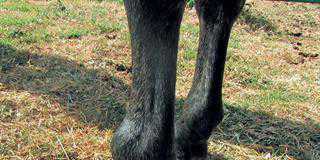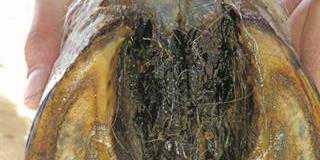Facial paralysis is a fairly common ailment in horses. The paralysis of the facial nerve can be slight or very dramatic. If treated immediately it normally can be reversed. The paralysis can occur on one side of the face (unilateral), or on both sides of the face (bilateral).
The causes are varied. Exposure to cold, trauma to the face or shock can all be reasons for facial paralysis. It also occurs after a serious infectious disease.
The symptoms
When the paralysis is unilateral or one-sided, the lip is drawn towards the middle. Bilateral paralysis precludes grasping of food while the lower lip hangs down. There is usually difficulty in drinking. In extreme cases the horse will have difficulty closing its eyelids. If this is the case, it is important to use saline eye drops to help keep the eyes moist.
Treating this illness homeopathically has had very good results:
• Gelsemium 200c (concentration) is very useful when the paralysis follows an infectious disease, especially influenza. Give once a day for one week.
• Causticum 30c: if the condition arose from exposure to cold, this remedy is best. Dosage is morning and night for five days.
• Ammonium phosphoricum 6c. This remedy is applicable if there is weeping. Dosage is evening and morning for five days.
• Zincum picricum 6c helps if there is chorea-like twitching of facial muscles together with general weakness and debility. Dosage and morning for one week.
• Msm: 30g daily.
• Garlic: the blood-cleansing properties of garlic are excellent. Feed 30g in morning and evening feed.
• Rescue Remedy: apply a small amount of the remedy on the temples of the horse as well as on the paralysed areas. Apply 1ml regularly in bottom lip. – Kim Dyson
Contact Kim Dyson on 082 888 6511. |fw













